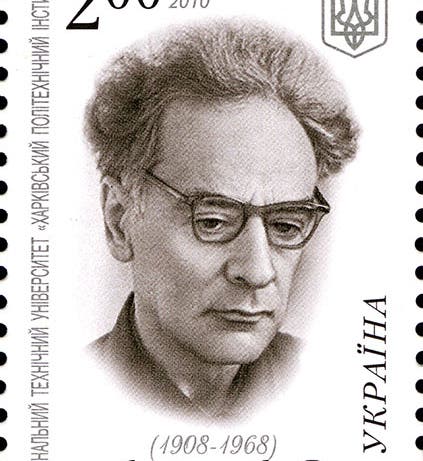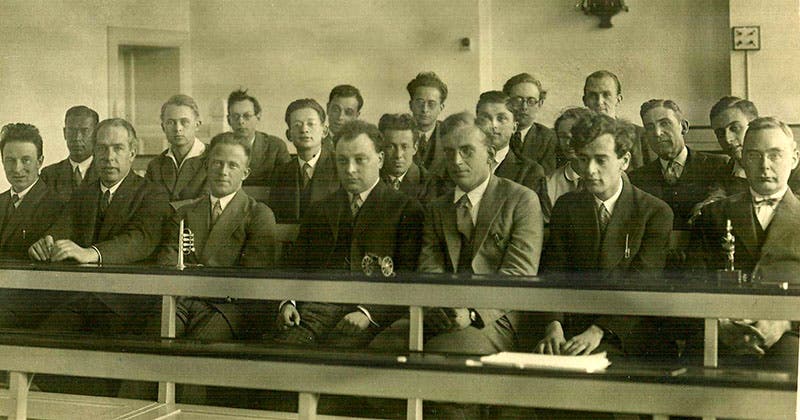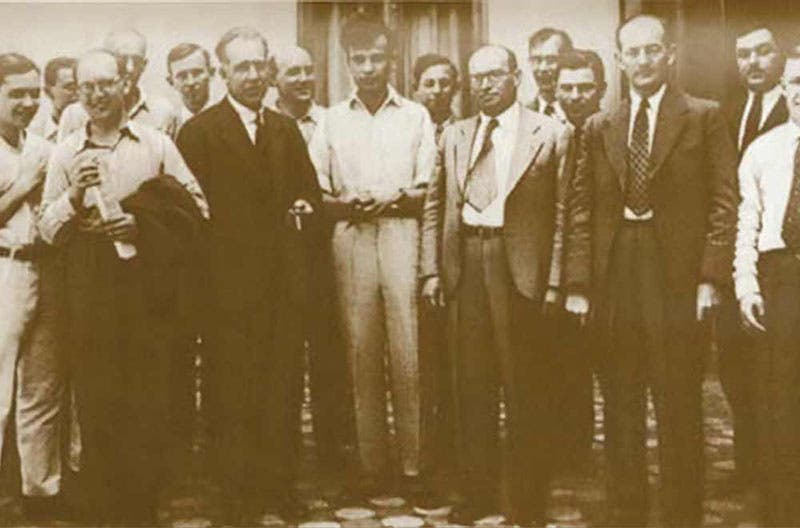Scientist of the Day - Lev Landau
Lev Davidovich Landau, a Soviet physicist, was born Jan. 22, 1908. Landau distinguished himself as a physics student, spent some time studying at the Bohr Institute in Copenhagen, working briefly with Werner Heisenberg and Wolfgang Pauli, and then returned to head up the theoretical physics department at the Kharkiv Institute in Ukraine, 1932-38, where he worked on theoretical low-temperature physics. There is a photograph of a 1930 conference in Copenhagen that has, in the front row, Bohr, Heisenberg, Pauli, George Gamow, and then Landau (second image). Almost all the important figures in the quantum revolution are in that row; only Paul Dirac and Erwin Schrödinger are missing. Niels Bohr visited Landau in Kharkiv in 1934; there is a photographic record of that visit as well (third image).
Landau, however, had political views, and he was not shy about expressing them. He was opposed to Stalin's “Great Purge” of 1937-38 and what Landau saw as a betrayal of socialist principles, and he said so, in print. That was not a move conducive to personal longevity, and Landau became part of the purge, arrested and imprisoned in April of 1938, along with two fellow scientists from Kharkiv. While one of his colleagues would remain in prison for 20 years, Landau was released after one year on the appeal of the more circumspect physicist Pyotr Kapitsa, who wrote a letter to Stalin and pleaded that he had discovered a new effect called superfluidity, and only Landau could explain it.
Having gained his freedom, Landau did indeed explain superfluidity, the disappearance of viscosity at very low temperatures, work for which he later received the Nobel Prize in Physics in 1962. Unfortunately, Landau was in a bad car accident in 1962 and could not attend the ceremony; had he done so, he would have been part of another remarkable photo that included, among the other laureates: Maurice Wilkins, Max Perutz, Francis Crick, John Steinbeck, James Watson, and John Kendrew (fourth image).
Landau died in 1968, a delayed result of his injuries of 1962. In addition to his award-winning work in physics, he is also remembered for a scale he devised to rank 20th-century physicists. It was an exponential scale, according to which 0 was the highest possible (indeed infinite) score, followed by 1 through 5, and because the scale was logarithmic, a "1" was considered 10 times more productive than a "2", and a "2" ten times better than a "3". Newton was a "1", as were Niels Bohr and Paul Dirac and several others. Einstein was given the highest rank, a "0.5", which made him about three times smarter, or at least more productive, than Newton and Bohr. Landau initially ranked himself as a "2.5", but later decided that he really deserved to be a "2" and moved himself up the scale. I tried to run down the original Landau scale, but my quest ended with a reference to a paper in a Russian journal; I couldn’t even read the reference, much less find the paper. The irony is that, with our extensive Russian holdings, we probably have that paper here in the Library.
Dr. William B. Ashworth, Jr., Consultant for the History of Science, Linda Hall Library and Associate Professor emeritus, Department of History, University of Missouri-Kansas City. Comments or corrections are welcome; please direct to ashworthw@umkc.edu.





![“Aurora Borealis,” hand-colored wood engraving by Josiah Wood Whymper, [Natural Phenomena], plate 2, 1846 (Linda Hall Library)](https://assets-us-01.kc-usercontent.com:443/9dd25524-761a-000d-d79f-86a5086d4774/0245ffcb-b70c-477c-8792-0a73ebd54eb2/Whymper%2011.jpg?w=210&h=210&auto=format&fit=crop)



